Juniperus scopulorum ‘Skyrocket’
Some garden spaces call for something a little special.
Maybe you need to fill a small corner next to the driveway, or you want to stop the wind from blasting through your yard. You know, the sort of situation where only a ‘Skyrocket’ will do.

We link to vendors to help you find relevant products. If you buy from one of our links, we may earn a commission.
This columnar evergreen is one of the narrowest juniper cultivars currently available. It truly lives up to its “rocket” moniker.
When fully-grown, ‘Skyrocket’ reaches about 20 feet tall and just three feet wide, which means you might mistake it for a small, green rocket if it were sitting on a NASA launchpad. Except this tree is much more elegant than anything NASA has launched, in my humble opinion.
Cold hardy down to -35°F in Zones 3 to 9, this tree is wildly popular across North America as a privacy screen or stately garden specimen.
This adaptable plant can tolerate cold, extreme heat, pollution, high elevations, salty sea air, and depleted soil. It doesn’t do well in super hot, humid areas, though (sorry Hawai’i), but that’s about its only limitation.
Itching to launch a ‘Skyrocket’ into your garden? Here’s what we’re going to discuss to help make that happen:
What You’ll Learn
Evergreens are often the hardworking background plants that fill in when everything else in the garden is hibernating.
But ‘Skyrocket’ can either play the role of a stalwart background plant or an eye-catching focal point. Ready to add one to your space? Let’s talk about where this plant comes from, first.
Cultivation and History
‘Skyrocket’ is a cultivar of the Rocky Mountain juniper (Juniperus scopulorum), which is a species also known as western red cedar, though it isn’t a true cedar (Cedrus spp.).
This cultivar was first introduced in 1949 at Schuel Nursery in South Bend, Indiana, and was originally called ‘Pilaris 1’ before it was renamed. Smart choice, in my opinion.
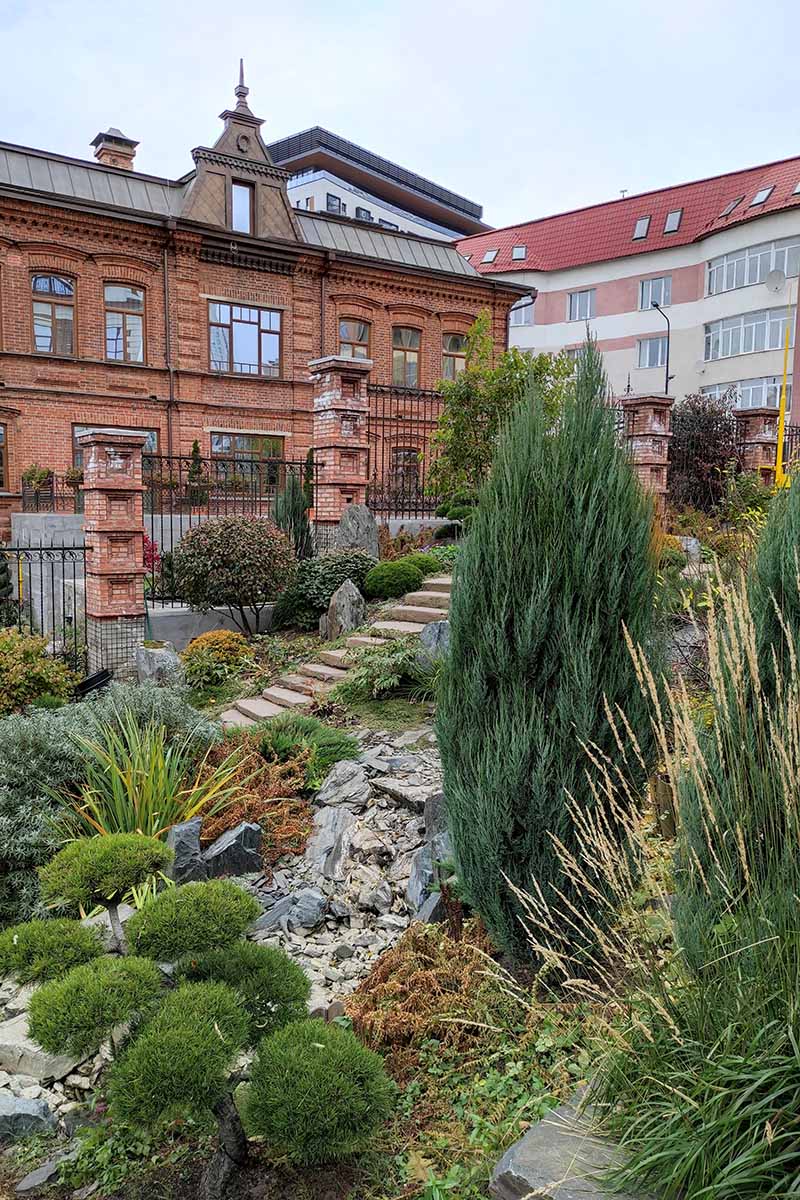
It’s often mislabeled as J. virginiana, aka eastern red cedar, and while you can certainly see the resemblance, this cultivar is from the scopulorum species.
These two species commonly hybridize when they grow in the same area, so it’s no surprise that people confuse the two.
The Rocky Mountain species naturally has a columnar shape, and ‘Skyrocket’ has been bred to exaggerate this growth habit. It has a fastigiate shape, meaning that it’s extremely upright and tapers at the top.
The leaves are bluish-green and scale-like, overlapping along reddish-brown or grayish-brown bark. When young, the leaves are more pointed and gray before rounding out a little and adopting their mature hue.
The blue-gray, round cones form on the dioecious plants in the summer and mature the following year.
‘Skyrocket’ has a shallow root system. Imagine the places where Rocky Mountain junipers grow in the wild – they fill in rocky spots where deep roots can’t penetrate.
You don’t have to worry about your ‘Skyrocket’ tapping into your sewer lines, but it might create bumps in your lawn.
Skyrocket Juniper Propagation
Rocky Mountain junipers, in general, don’t grow well from seed or layering. Stick to using cuttings for propagation or purchasing transplants.
Taking a cutting is an effective way to recreate the characteristics of a plant because it creates a genetic clone. If you were to attempt to grow from seed, the resulting plant wouldn’t grow true to the parent.
To take a cutting, remove a young, pliable stem about the length and diameter of a pencil from the parent plant, defoliate the bottom half, and place it into a growing medium. Keeping the soil moist as you wait for roots to develop. It’s not a quick process, but it’s not challenging.
For a step-by-step walkthrough of the process, please visit our guide to growing junipers.
To settle a transplant into the ground, you’ll need to dig a hole about the same size as the container the plant is currently growing in. Do this in the spring or early fall.
Gently remove the plant and loosen up the roots a little. You want to encourage the roots to grow down and out, not twist back into the rootball, which can happen if you don’t loosen up roots that have been growing in a pot for a few years.
Once the plant is in the ground, backfill the hole with the removed soil and lightly water.
Because ‘Skyrocket’ plants are so narrow, you can plant them close together without leaving too much space.
Unless you live in an extremely humid area, you don’t need to worry too much about air circulation. Plant ‘Skyrocket’ plants two feet apart if you want to create a windbreak or fence.
Give them more breathing room if you don’t want a solid wall of green, or prefer to create focal points.
How to Grow Skyrocket Juniper
Since ‘Skyrocket’ has a shallow root system designed to cling onto sandy, arid soil, don’t even think about putting this plant in poorly-draining, heavy clay soil.
The shrub also needs a sunny spot with full sun exposure. We’re talking at least eight hours of direct sun per day.
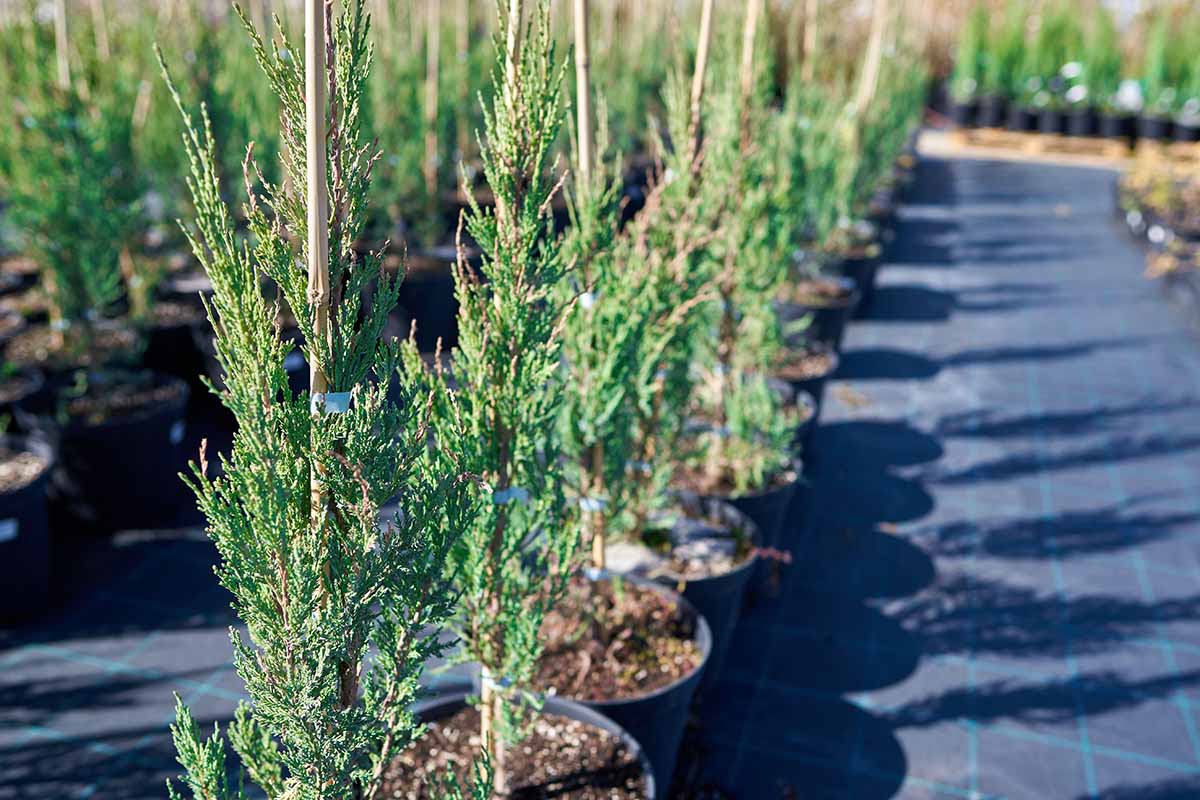
I know it’s tempting to plant something you really love even if it isn’t exactly right for your area and hope for the best. Plus, you often hear about how easy junipers are to grow, right?
That only applies if you grow them in the right environment. Put them in a shady spot with poor drainage, and you’ll find they’re not so easygoing after all.
I always thought ‘Skyrocket’ junipers were the least demanding specimens growing in my garden.
In my previous home, I planted a row of ‘Skyrocket’ junipers to create a living fence along a busy road, and I pretty much ignored them after the first year. Though you better believe I enjoyed the privacy and sound-dampening effect they provided.
I also planted one as a centerpiece for a garden and to provide a winter focal point, and it stood tall there without any work on my part year after year. I would give it a mental hug as I toiled around my demanding roses and forever struggling hydrangeas.
Then I moved somewhere with heavy clay, and I figured if I just amended the heck out of the soil and was careful about watering, they’d be fine. I was wrong.
It took me three separate attempts to try and grow ‘Skyrocket’ junipers before I accepted that they just can’t survive in my heavy soil and rainy climate.
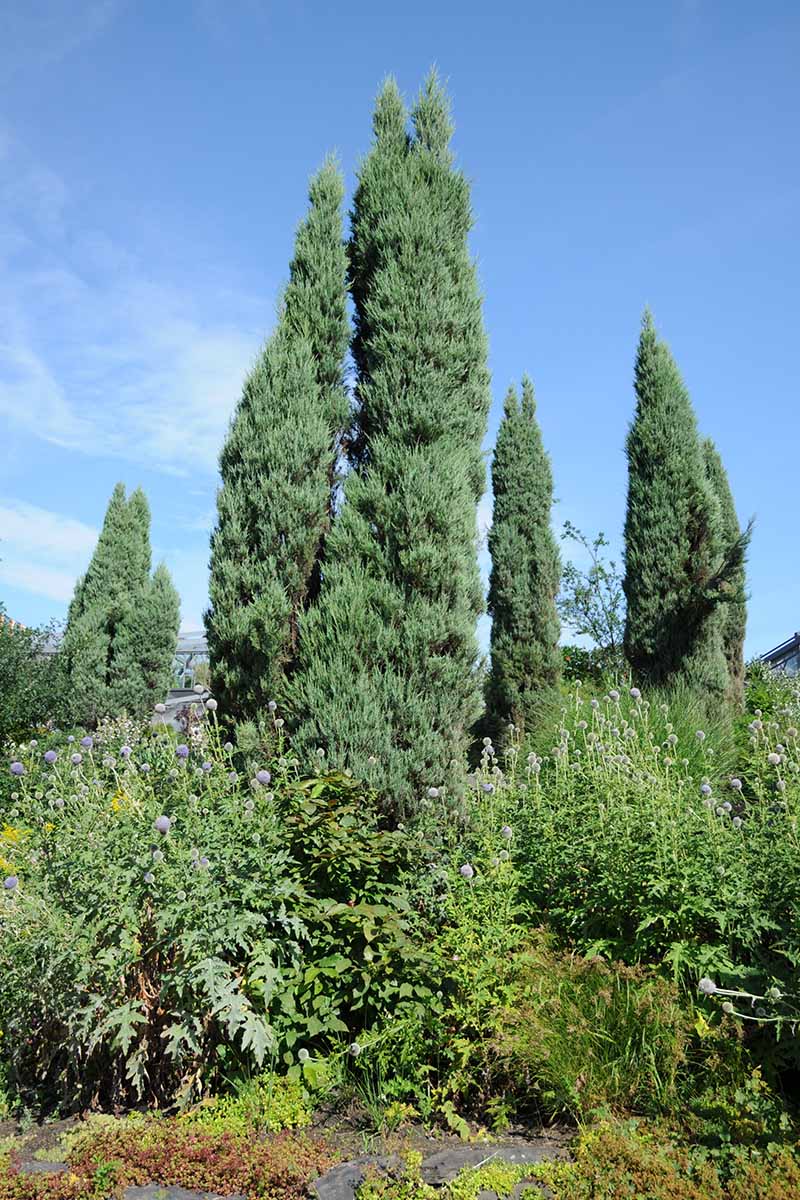
If you have heavy clay, unless you can commit to digging down at least six feet deep and ten feet wide to amend the soil, I’d suggest you consider planting a different shrub. Or you can grow it in a raised bed.
I have neighbors who successfully grow junipers, but they have sloped yards held in place by rock retaining walls so the moisture drains out more readily.
Other than not tolerating heavy clay, ‘Skyrocket’ is pretty adaptable to a range of environments and soil types. They’ll adapt to a wide pH range, from 5.0 to 8.0. Sandy loam is ideal, but anything from sandy to loamy clay will do.
But it doesn’t do well in areas with high heat and humidity, such as you find in the extreme southern states, Hawai’i, and the very bottom of southern California.
For the first year, you need to keep the roots a bit more moist than you will need to in the coming years. Allow the top inch to dry out between waterings. After the juniper is more established, let the top three inches dry out.
If you’re struggling to keep the soil moist, an inch layer of organic mulch like well-rotted compost or shredded conifer wood will work nicely.
‘Skyrocket’ isn’t the best option if you want a container juniper. It is too tall, requiring a massive, heavy pot to contain it. But, if you want to make a grand statement, go for it.
Find a heavy concrete or clay pot that’s at least 28 inches in diameter and just as deep. Bonus points if you find one that’s a bit wider than that.
Make sure the container has excellent drainage. Otherwise, just plan on setting fire to the money you’re spending on the tree and container, and save yourself a step.
Growing Tips
- Plant ‘Skyrocket’ in well-draining soil.
- Keep young plants moist, older plants can be allowed to dry out more.
- Grow in full sun.
Pruning and Maintenance
You don’t need to fertilize or prune your ‘Skyrocket’ juniper. It will maintain that lovely shape all on its own. If you see a dead branch, remove it. You can also trim off any branches that stick out at funny angles.
When you prune, cut back to the main branch or trunk. If you prune back into old wood that lacks any soft, green growth, it won’t send out new growth, and you’ll be left with a bare stump, so it’s best to take the whole branch off.
We have a guide to pruning upright junipers that provides full details.
‘Skyrocket’ junipers are fairly slow-growing, so don’t overdo the pruning. You’ll be waiting a long time for it to regrow.
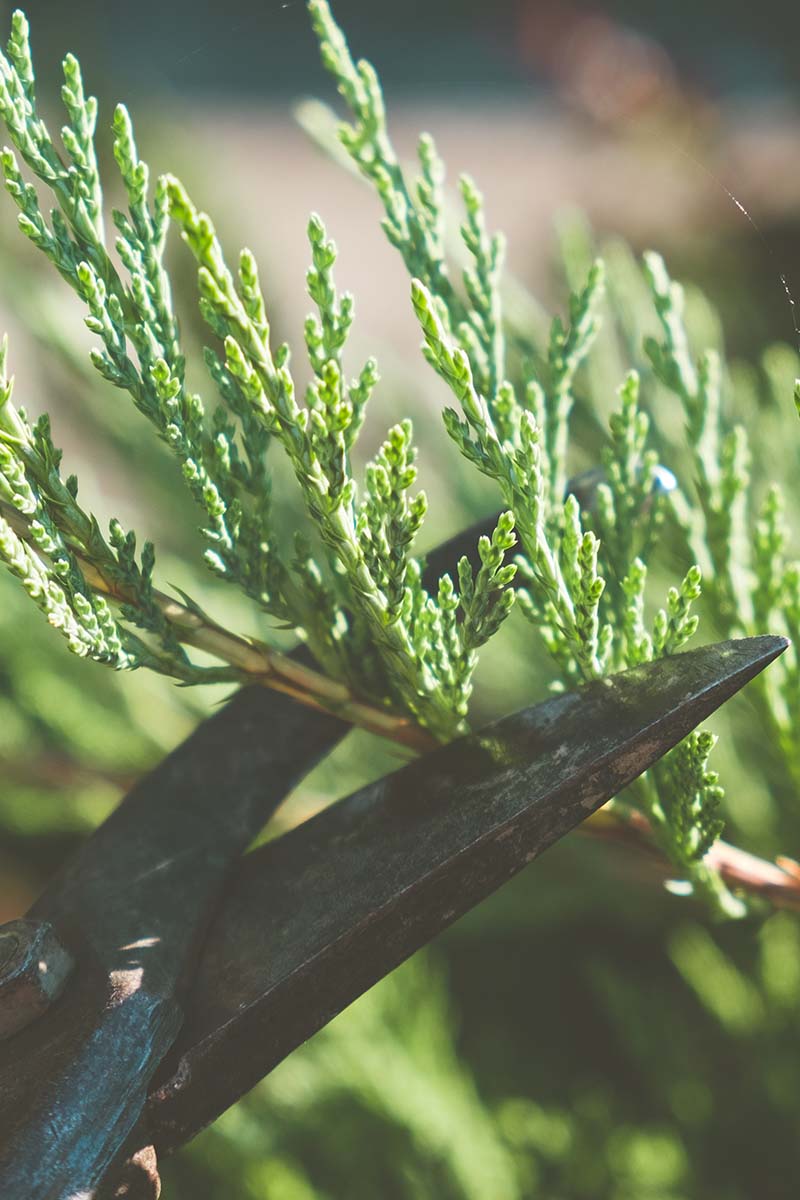
If you experience heavy, prolonged snow in your area, you might want to wrap your shrub in burlap or secure it with twine to maintain the shape and protect the branches from bending and breaking. Don’t leave this on all winter long unless you consistently have heavy snow.
You want the plant to grow strong and resilient without you needing to baby it, so unless you have a particularly heavy snow in the forecast, I advocate for allowing whatever will happen to happen.
Where to Buy
You aren’t going to have any trouble sourcing ‘Skyrocket’ juniper because it’s extremely popular. In fact, you will probably find that you have a ton of buying options.
For example, Fast Growing Trees carries ‘Skyrocket’ in singles or a pack of six in one-to-two, three-to-four, four-to-five, or five-to-six foot tall live plants.
Or you can pop over to Nature Hills Nursery for a two-to-three foot tall plant in a #1 container.
Managing Pests and Disease
Rocky Mountain junipers, in general, are tough as nails. ‘Skyrocket’ is certainly no exception. It’s rarely troubled by anything. I wish I was like that.
You can check out our growing guide to Rocky Mountain junipers to learn what to watch for.
Spider mites are the most common pest, and Cercospora blight is the main disease villain. Both are uncommon unless your ‘Skyrocket’ is already stressed for some other reason.
These plants are hosts of cedar apple rust, so don’t plant them with apples.

The most important thing to watch for isn’t disease but root rot caused by too much water.
This is a physiological issue where the roots simply can’t access the oxygen they need and they drown.
Remember, good drainage is your friend! If your soil isn’t well-draining, you have to be extra careful about how much water you give the plant. And if you live in a wet area with poor drainage, it’s best to find something else to grow.
Best Uses for Skyrocket Junipers
With a tree or shrub of this tall, columnar shape, there are only so many ways you can put it to use. As a windbreak, ‘Skyrocket’ is pretty much impossible to beat.
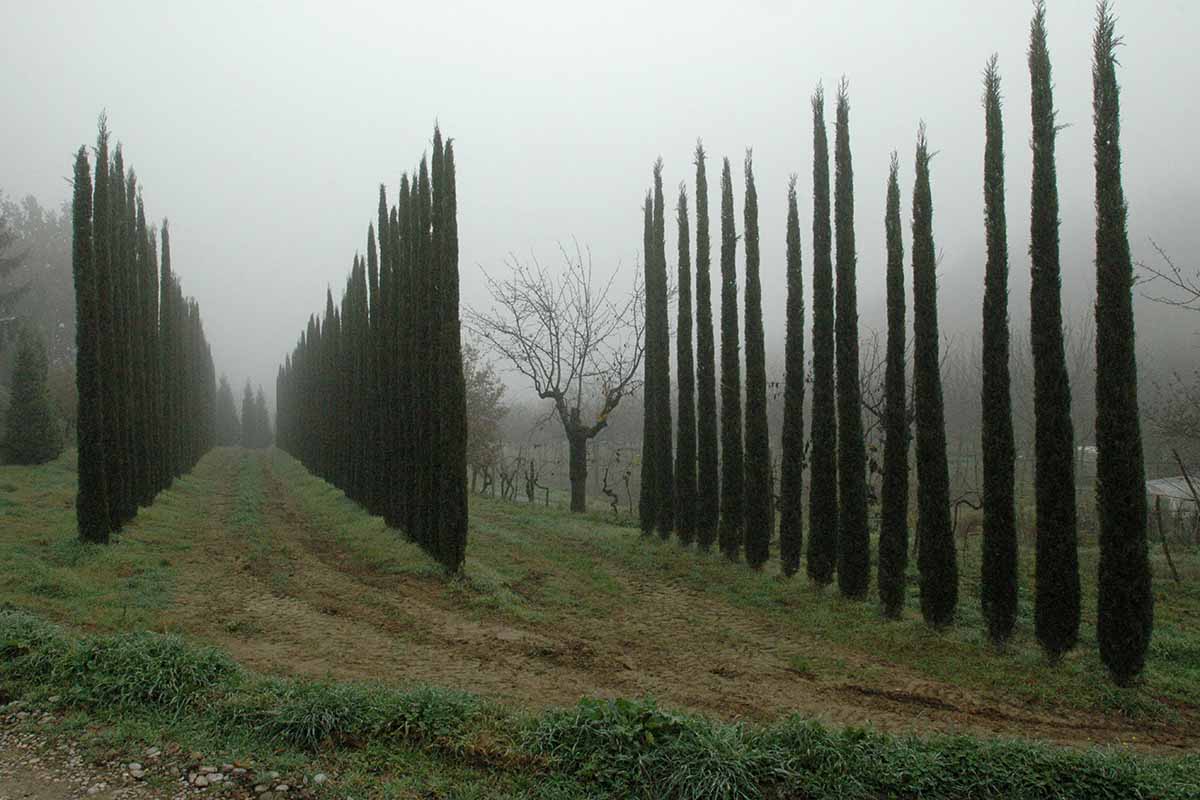
Line up a few, and you’ll be wondering what the heck wind is anyway. As a privacy screen, they’re better than a thick brick wall, and twice as tall.
As a tall centerpiece for a garden, ‘Skyrocket’ makes quite the statement. A grouping of three or five is equally striking.
Quick Reference Growing Guide
| Plant Type: | Evergreen woody shrub | Foliage Color: | Blue-green |
| Native to: | Western North America | Tolerance: | Drought, pollution, depleted soil, sandy soil |
| Hardiness (USDA Zone): | 3-9 | Soil Type: | Sandy loam |
| Season: | Evergreen | Soil pH: | 5.0-8.0 |
| Exposure: | Full sun | Soil Drainage: | Well-draining |
| Time to Maturity: | 10 years | Attracts: | Birds |
| Planting Depth: | Same depth as growing container (transplants) | Companion Planting: | Coneflower, Euphorbia, lavender, rose of Sharon, rose, rosemary, rudbeckia, salvia, sedum |
| Spacing | 2 feet | Avoid Planting With: | Apples |
| Height: | 20 feet | Uses: | Hedge, privacy screen, specimen, windbreak |
| Spread: | 3 feet | Order: | Pinales |
| Growth Rate: | Slow | Family: | Cupressaceae |
| Water Needs: | Low | Genus: | Juniperus |
| Maintenance: | Low | Species: | Scopulorum |
| Common Pests and Disease: | Spider mites; cedar apple rust, Cercospora blight | Cultivar: | Skyrocket |
Head to the Stars
Never has gardening seemed so heavenly. It’s anchored in terra firma, but ‘Skyrocket’ juniper is shooting for the stars.
It serves such pedestrian roles as protecting you from wind or the prying eyes of your neighbors, but stand next to it and follow its shape up, up, up, and you’ll end up in the sky.
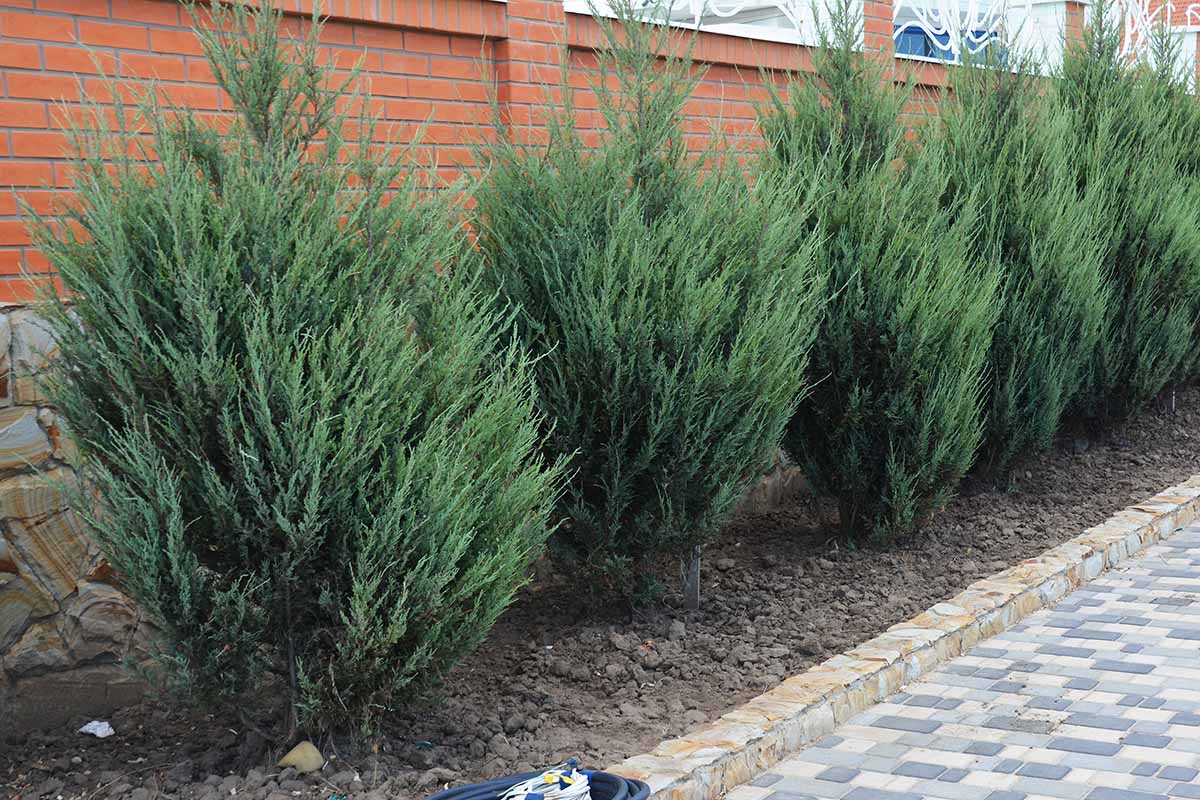
How do you plan to put ‘Skyrocket’ to work in your garden? Is it destined to be a tall hedge? Lining a winding walkway? Let us know in the comments.
‘Skyrocket’ is just the tip of the juniper iceberg. These adaptable plants are endlessly fascinating. Want to learn more about junipers? Check out these guides next:
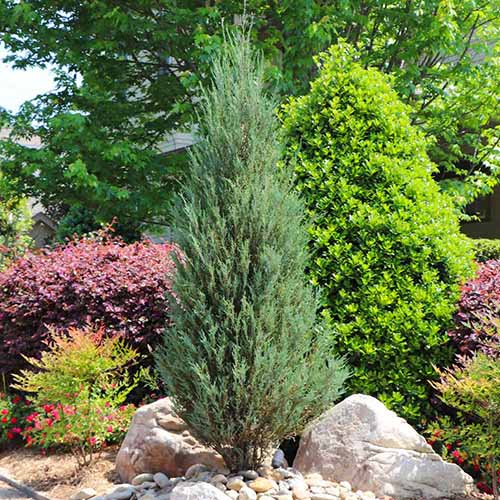
I don’t know how many times I have heard/read that Skyrocket Junipers are “slow growers.” This is simply NOT true at all. Also, existing branches WILL grow back new foliage, so they do not have to be cut all the way back to the trunk. When we had our new house built over 6 years ago we landscaped the front and back yards with 50 Skyrocket Junipers. The 20 Junipers in the front yard started out at 18 inches high (basically little twigs), and they are now over 12 feet tall and 2 feet in diameter. The 30 Junipers in… Read more »
Everyone’s experience is different. No matter where I have gardened, my ‘Skyrocket’ junipers have been slow relative to my other plants and certainly nowhere nearly as quickly as yours have grown. All junipers, including ‘Skyrocket,’ will not grow new foliage from bare, old wood. You can trim into the soft, pliable wood with green growth and it will send out new growth. If you trim back to the bare wood, new growth will not emerge, which is why we recommend going back to the trunk rather than leaving bare stems. I’m glad to hear that your junipers have done so… Read more »